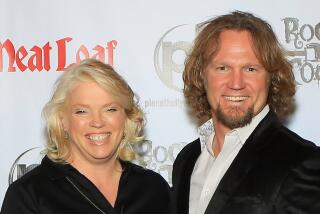Dedham Pottery: Prized for Its Rarity, Not Age
Interest in Dedham pottery has grown steadily throughout this century, attracting collectors across the entire country and pushing the price of rare plates toward $2,000.
“There used to only be a regional market for Dedham,” Michael Witt, co-owner with Jim Messineo of the JMW Gallery in Boston, told Bruce E. Johnson in an article in the current issue of Country Living, “but now it’s become a nationally known and collected pottery.”
Every piece of blue-and-white Dedham is distinguished by a crackled glaze intended to make it look decades older than it is. Dedham, produced from the late 19th century to 1943, is best known for its rabbit patterns, but rabbits account for only one of a score of patterns that also include lions, azaleas and elephants.
The variety of forms and designs produced has inspired several different categories of Dedham collectors. According to James D. Kaufman, a collector, appraiser and curator for the Dedham Historical Society’s pottery collection, one of the largest groups of collectors seeks to gather as many Dedham designs as possible in a single form, such as plates, bowls and pitchers.
Another sizable category attempts to assemble a complete set of wares bearing the famous rabbit design, from common plates to rare serving pieces and accessories.
Rarity of design is an important consideration for most collectors.
“Many Dedham collectors are more concerned with rarity than age,” Kaufman said. “While little distinction is made between an 1896 rabbit plate and one made just before the pottery closed in 1943, a great distinction is made between a rabbit plate and one featuring a rare lion pattern.”
Rabbits that face counterclockwise around a plate’s edge, for example, have become the most sought-after of the crackleware rarities. Fewer than 10 examples are known to have survived, and collectors have pushed the price for each of the rare 6-, 8- or 10-inch plates toward the $2,000 level.
In comparison, a standard 6-inch plate with the rabbits running in the more familiar clockwise direction currently sells in the $100 to $125 range.
Regardless of their approach, most collectors ask if a piece is perfect. A conspicuous rim chip, a crack or even a hairline fracture can reduce a valuable Dedham plate to little more than a curiosity among serious collectors.
But, according to Dedham dealers Witt and Messineo, pieces that have survived structurally unscathed must pass a rigorous set of aesthetic criteria with regard to the quality of painting, the consistency of the crazing and the overall surface of the glaze.
Collectors look for distinct, clean outlines, consistent spacing and uniform color. Fine, weblike crackling, as much a Dedham trademark as the crouching rabbit, is also subject of intense scrutiny by collectors.
Continued demand and escalating prices tagged to the rapidly disappearing forms have inspired a number of Dedham pottery reproductions in the last 20 years. Two Massachusetts companies are presently producing replicas of both earlier forms and new figural models. Each is properly marked to avoid any confusion with the pre-1943 antiques.
The Dedham Historical Society, which owns the rights to the original Dedham Pottery trademark, has reissued a limited-edition lion plate with a new variation mark to permanently distinguish it from the originals.
More to Read
The biggest entertainment stories
Get our big stories about Hollywood, film, television, music, arts, culture and more right in your inbox as soon as they publish.
You may occasionally receive promotional content from the Los Angeles Times.










